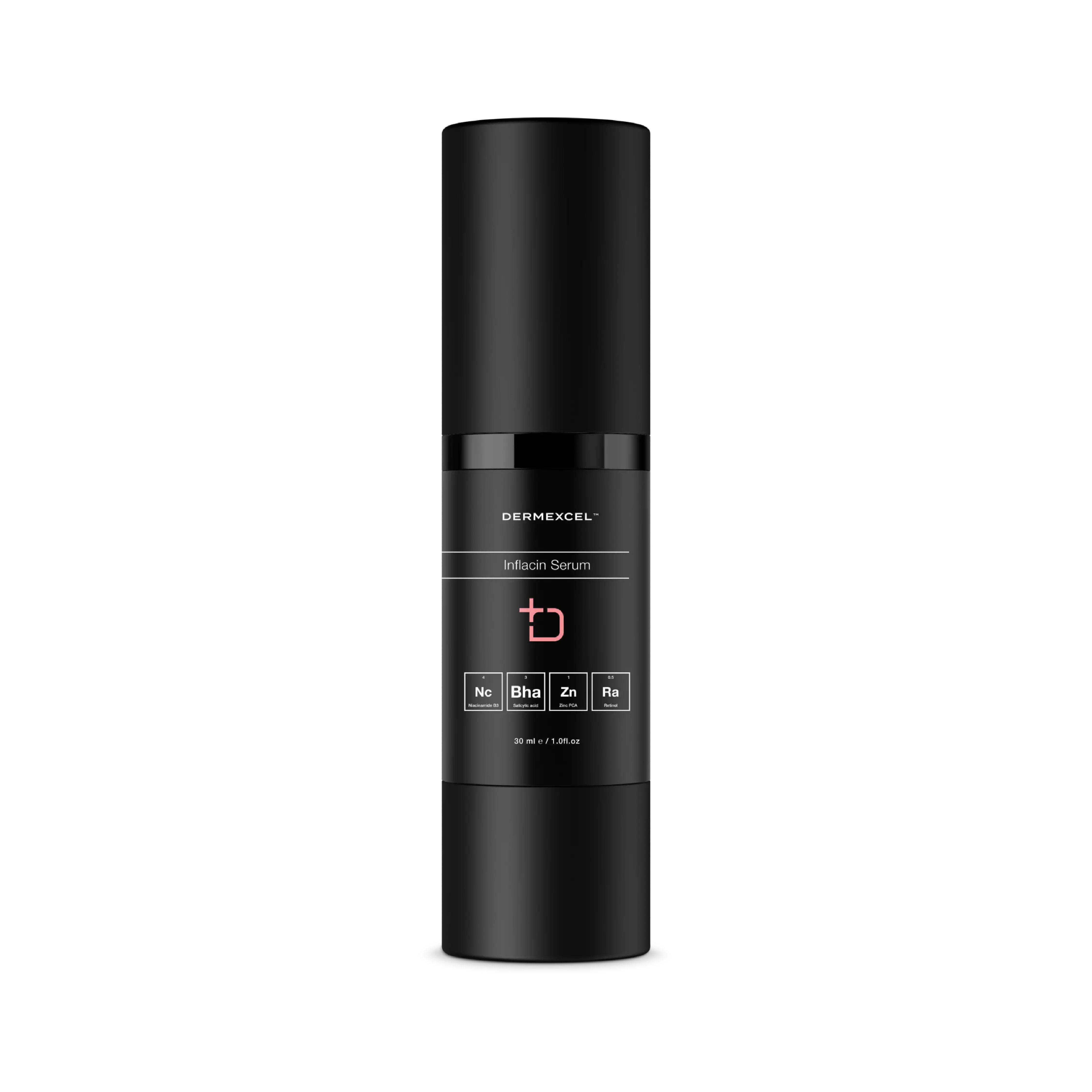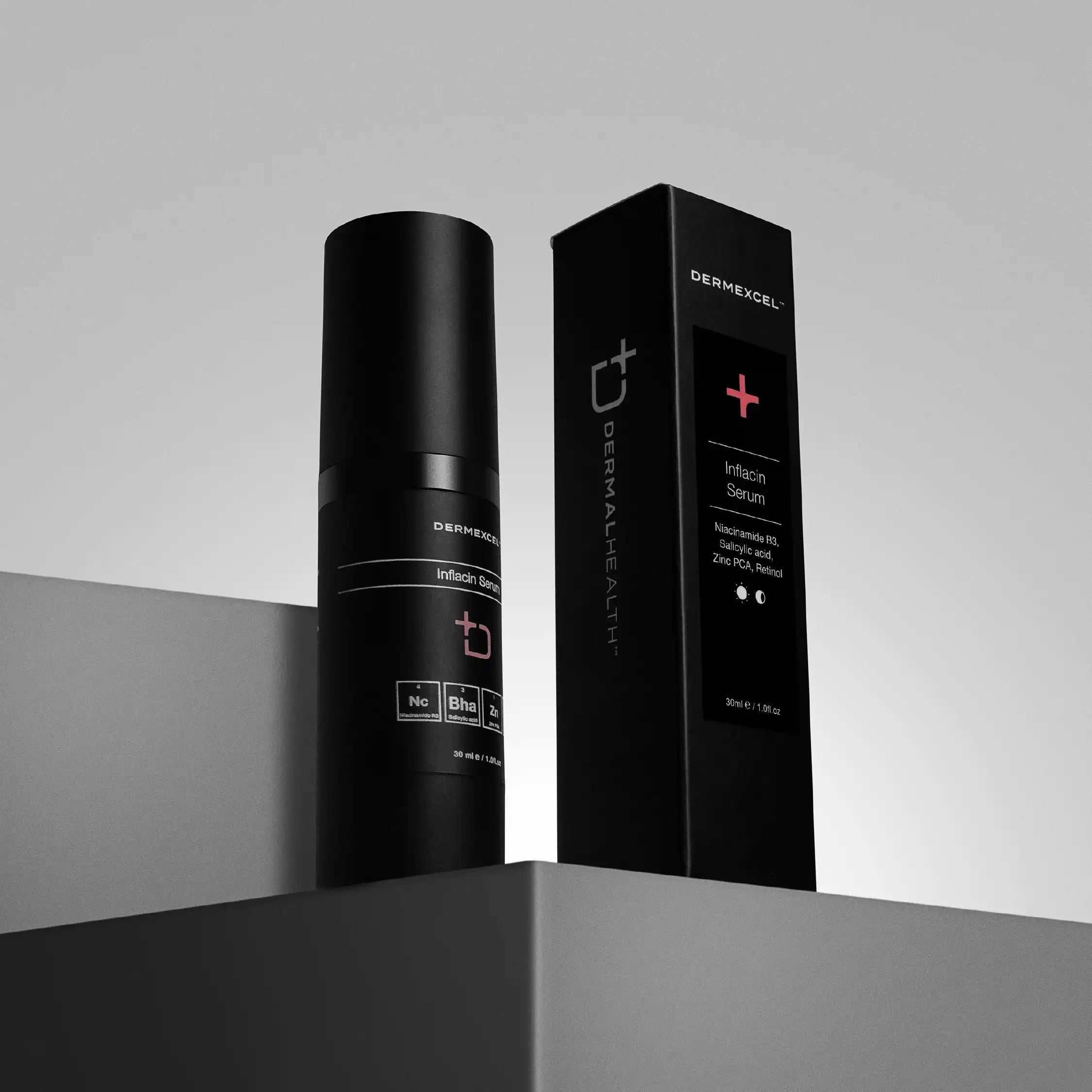





Pay interest-free installments from R 173.04 with various payment gateways selected at checkout.
SIZE: 30 mL




Choose options


Aqua, Polyethylene Glycol, Niacinamide, Salicylic acid, Sodium Acrylates Copolymer & Lecithin, Phenoxyethanol & Ethylhexylglycerin, Zinc PCA, Dimethyl Isosorbide & Hydroxypinacolone Retinoate, Sodium Phytate & Aqua & Alcohol, Butylene Glycol, Hydrolyzed Yeast Protein, Fomes Officinalis (Mushroom) Extract, Pyridoxine, Niacinamide, Panthenol, Allantoin, Threonine, Biotin, Tocopherol, Disodium EDTA
increased sebum
clogged pores
bacterial infiltration
inflammation
niacinamide
zinc pca
retinol
salicylic acid
increased sebum
niacinamide
zinc pca
retinol
salicylic acid
clogged pores
niacinamide
zinc pca
retinol
salicylic acid
bacterial infiltration
niacinamide
zinc pca
retinol
salicylic acid
inflammation
niacinamide
zinc pca
retinol
salicylic acid
Inflacin Serum
product benefits
Sebum Regulation
Unblock clogged pores
Anti-inflammatory
Renew skin cells
Anti-Microbial
Reduce signs of aging
Indications for Inflacin Serum
blackheads
whiteheads
Clogged Pores
Enlarged Pores
Rough Skin Texture
Acne / Breakouts
Inflammation
Rosacea / Red Skin
Folliculitis
Pigmentation
Aging Skin
Sensitive Skin
Inflacin serum
Mode of action
inflacin serum
targets all phases of the acne process
increased sebum
clogged pores
bacterial infiltration
inflammation
niacinamide
zinc pca
retinol
salicylic acid
increased sebum
niacinamide
zinc pca
retinol
salicylic acid
clogged pores
niacinamide
zinc pca
retinol
salicylic acid
bacterial infiltration
niacinamide
zinc pca
retinol
salicylic acid
inflammation
niacinamide
zinc pca
retinol
salicylic acid
salicylic acid
pore clearing action
inflacin serum
mode of action on acne

REGULATE SEBUM (OIL) PRODUCTION AND EXCRETION
Salicylic acid; Niacinamide; Zinc; Retinol

PREVENT DEAD SKIN CELLS AND OIL BUILD-UP IN THE PORES
Salicylic acid; Retinol

Prevent bacterial infiltration
Salicylic acid; Niacinamide; Zinc; Retinol

DOWN-REGULATE THE INFLAMMATORY RESPONSE
Salicylic acid; Niacinamide; Zinc; Retinol
Rosacea
Stages and treatment objectives




mode of action
salicylic acid
rosacea and acne treatment

anti-inflammatory

Anti-bacterial

Comedolytic

Keratolytic
mode of action
zinc pca
rosacea and acne treatment

anti-bacterial

sebum (oil) regulator

anti-inflammatory
Testimonials


Not sure which products you need?
Find your regimen
Assessment
Submit your free Dermal Diagnosis™ Assessment
Treatment Plan
Receive your Free Personal Profile and Treatment Plan
Confident Skin
Start your Simple and Effective journey to Confident Skin!















